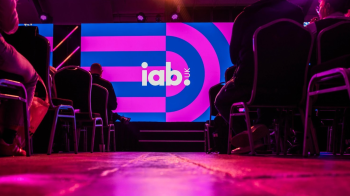As the in-app market evolves, what are the opportunities for advertisers?
Antonio Dale Forte - Industry Initiatives Executive, IAB UK
Our Mobile and In-App Steering Group looks at the opportunities for advertisers in the evolving in-app market
The world of in-app advertising represents a treasure trove of potential for brands to creatively engage with consumers. No longer a novelty, apps are now intrinsic in everything we do, from booking a holiday to buying a house.
However, navigating such a complex and varied landscape can be difficult, especially as the market evolves with changes such as Apple’s proposed privacy developments on the horizon. Here, our Mobile & In-App Steering Group shed some light on the in-app opportunities for advertisers and what’s needed to succeed in this space.
Q1: The app ecosystem is a hugely varied channel with many options available to brands. What advice would you give to advertisers looking to start out or expand their in-app advertising presence? And what does inventory typically look like in the space?
"Advertisers need a clear understanding of their goals, as this will determine the type of inventory they purchase and payment model. Generally, brands should optimise towards commercial KPIs, unless the focus is solely audience building.
Working with ad networks to purchase inventory can help advertisers optimise reach, campaign placement, engagement and install, and we recommend using an independent attribution partner to properly measure ROI and reduce the risk of fraud losses," said Paul Wright, managing director UK, France, Middle East & Turkey at AppsFlyer.
"There are three types of ad revenue when running in-app ads: Cost-per-Thousand Impressions (CPM), Cost-per-Click (CPC) and Cost-per-Action (CPA). In terms of ad formats, native ads are usually the least disruptive, but more involved formats such as playable or rewarded video ads are also gaining traction and offer a superior user experience.
"On the flipside, slow, inefficient or irrelevant ads can ruin the user experience, frustrate your users and fail to deliver satisfactory conversion rates," said Isabel Ferreira, director of sales, UK & Ireland at Adjust.
Q2: Brand safety remains of critical importance to advertisers; what options do brands have when looking to include in-app activity in their campaigns?
"Ad fraud prevention is an important part of brand safety, especially when it comes to protecting your budgets and the integrity of your data. Ad fraud affects all apps, everywhere - no matter the location or vertical. Fraudsters simply follow the money, and that means that apps with high CPAs - such as the ecommerce, travel, social / dating, and finance verticals - will be greater targets than others.
"We highly recommend brands work with proactive rather than reactive ad fraud filters, to avoid spending time on disputes and chargebacks. Proactive ad fraud filters stop fraud before it happens, so brands can focus on what really matters - driving growth," said Isabel Ferreira, director of sales, UK & Ireland at Adjust.
"As fraudsters look for loopholes and gaps to exploit, they will often try and place sensitive brand safe campaigns (usually ones offering higher payouts) in non-brand safe placements - typically available for a cheaper price.
"Indeed, fraud targeting mobile app advertising is evolving faster than ever, with in-app fraud rates hitting unprecedented numbers in 2020. The only way to efficiently fight fraud is through data. The more data you have, the better equipped you will be in understanding where the perpetrator is, its volumes, methodologies, and most importantly, how to handle it," said Paul Wright, managing director UK, France, Middle East & Turkey at AppsFlyer.
Q3: After what has been an uncertain year for many, what changes or trends should advertisers be aware of as they plan for 2021?
"TikTok is the app to watch as the world’s fastest growing social media platform and most downloaded app in 2020. Brands and marketers should take advantage of TikTok’s rise to continue engaging their audience.
"Apple is also expected to introduce the App Tracking Transparency (ATT) framework in early 2021, that is expected to all but diminish IDFA collection. Advertisers will need to ensure they adopt solutions that are compliant with iOS end user privacy needs – even when certain identifiers are absent," Paul Wright, managing director UK, France, Middle East & Turkey at AppsFlyer.
"All eyes are currently on Apple’s proposed privacy changes for iOS 14, coming into effect in early 2021, which will require apps to request user consent to track their users’ data. In the run-up to the changes, securing user consent should be your top priority. After all, if users opt-in, apps will be able to return to near-normal pre iOS 14 activity - and it will become a real competitive advantage to have high consent rates.
"To maximise opt-in rates, brands will need to combine clear messaging and intuitive UX. We’ve been working closely with clients since the announcement to perfect their strategies, and so far have seen opt-in rates of between 30-60%. We are confident that the industry can use this opportunity to create a sustainable future for app developers, advertisers, and end users alike," said Isabel Ferreira, director of sales, UK & Ireland at Adjust.
This piece was first published on The Drum
Written by
Antonio Dale Forte
Related content
Mood, mindset and meaning: how audio and culture shaped day two of IAB Upfronts
Learn moreFrom WhatsApp to fandom: How connection and creativity ruled IAB Upfronts day one
Learn moreLime bikes into September’s Joy of Digital Award with strike-day campaign
Learn moreAI in advertising: balancing innovation with trust
Learn more
Fast forward to 2030 with Futurescape
An in-depth exploration of the attitudes, innovations and media shifts that will shape the years ahead and redefine how we advertise by the turn of the decade



